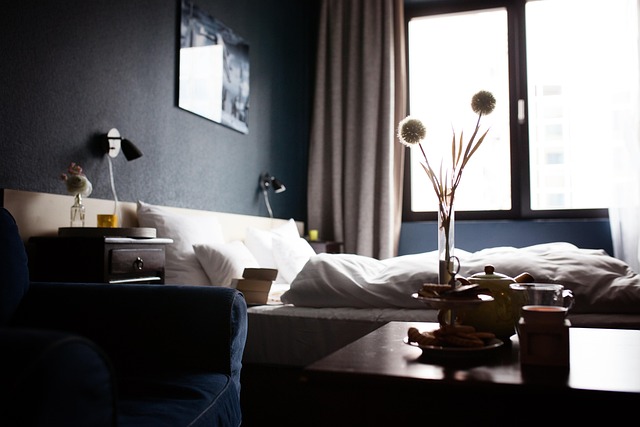Acoustic Textiles: The Silent Revolution in Home Decor
Imagine stepping into a room where the very fabric of your surroundings whispers tranquility. The curtains, the upholstery, even the wall hangings, all working in harmony to create an oasis of calm. This isn't a scene from a futuristic novel; it's the reality of acoustic textiles, a groundbreaking trend that's redefining the way we experience our living spaces.

The concept of using textiles for sound control isn’t entirely new. Ancient civilizations used heavy tapestries to insulate castle walls, not just for warmth but also to muffle echoes in vast stone halls. However, the modern iteration of acoustic textiles takes this age-old wisdom and elevates it with advanced materials and scientific understanding of sound behavior.
Weaving Technology into Fabric
At the heart of acoustic textiles lies a complex interplay of fiber composition, weave structure, and surface treatment. Manufacturers employ a variety of techniques to enhance the sound-absorbing properties of fabrics. Some use microfibers that create a labyrinth of tiny air pockets, trapping sound waves. Others incorporate specially designed yarns with sound-dampening cores.
One of the most exciting developments in this field is the use of nanofibers. These ultra-thin fibers, often less than 100 nanometers in diameter, create a dense network that effectively captures sound waves across a wide frequency range. When woven into fabrics, they offer superior acoustic performance without adding bulk or weight.
From Walls to Windows: Applications in Home Design
The versatility of acoustic textiles opens up a world of possibilities for home design. No longer confined to padded panels in recording studios, these fabrics are making their way into every corner of the modern home.
Wall coverings are perhaps the most obvious application. Acoustic wallpapers and fabric panels can transform a room’s soundscape without compromising on style. Available in a wide range of patterns and textures, they offer designers the freedom to create visually stunning spaces that are also acoustically balanced.
Window treatments are another area where acoustic textiles shine. Curtains and drapes made from these materials not only control light but also act as a barrier against outside noise, creating a peaceful sanctuary even in bustling urban environments.
Upholstery fabrics infused with acoustic properties are revolutionizing furniture design. Sofas, armchairs, and even ottomans can now contribute to a room’s acoustic performance, absorbing excess sound and reducing reverberation.
The Art of Acoustic Architecture
Incorporating acoustic textiles into home design requires a nuanced understanding of both aesthetics and acoustics. Designers are increasingly adopting an approach that views rooms as acoustic environments, carefully considering how sound travels and interacts with surfaces.
This holistic approach often involves strategic placement of acoustic elements. For instance, a living room might feature an accent wall covered in sound-absorbing fabric, complemented by acoustically treated curtains and upholstery. The result is a space that not only looks cohesive but also sounds harmonious.
Beyond Noise Reduction: The Multifaceted Benefits
While the primary function of acoustic textiles is sound control, their benefits extend far beyond noise reduction. These fabrics can significantly improve the overall quality of life in a home.
For one, they contribute to better speech intelligibility. In spaces with poor acoustics, conversations can become muddled, leading to strain and fatigue. Acoustic textiles help clarify speech by reducing echo and reverberation, making communication easier and more pleasant.
Moreover, the reduction in ambient noise can lead to improved concentration and productivity. This is particularly beneficial in home offices or study areas, where a quiet environment is crucial for focused work.
The Green Sound: Sustainability in Acoustic Textiles
As with any emerging technology, there’s a growing emphasis on the sustainability of acoustic textiles. Many manufacturers are exploring eco-friendly options, using recycled materials or renewable fibers in their production.
Some innovative companies are even developing biodegradable acoustic fabrics, ensuring that these materials don’t contribute to landfill waste at the end of their lifecycle. This focus on sustainability aligns with the broader trend of eco-conscious home design, appealing to environmentally aware consumers.
A Sound Investment: The Future of Acoustic Textiles
As urban living becomes increasingly dense and noisy, the demand for acoustic solutions in residential spaces is set to grow. Acoustic textiles offer a sophisticated answer to this challenge, providing a way to create serene, comfortable environments without sacrificing style.
Looking ahead, we can expect to see further innovations in this field. Smart acoustic textiles that can adapt their properties based on ambient sound levels are already in development. Imagine curtains that automatically adjust their density to block out sudden noise spikes or wall coverings that change their absorption characteristics to maintain optimal room acoustics.
The integration of acoustic textiles into home design marks a significant shift in how we think about our living spaces. It’s not just about how a room looks, but how it sounds and feels. As this technology continues to evolve, it promises to transform our homes into true havens of tranquility, where peace and style coexist in perfect harmony.





